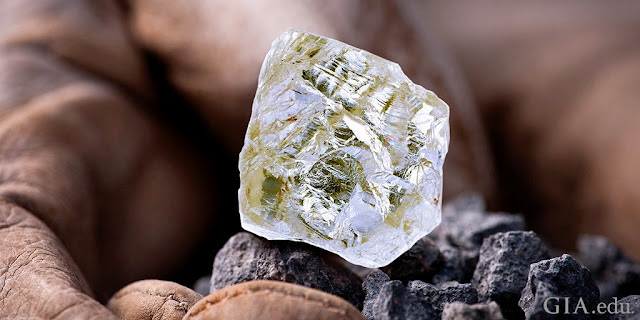187.7ct Foxfire diamond found in sub-Arctic ice
 |
| The Foxfire diamond is the most important recognized uncut, gem-high quality diamond mined in North America. (Smithsonian Museum of Natural History/Amadena Investments, LLC ) |
Unlikely there shall be a tough diamond of this measurement popping out of North America once more
The 187.S carat gem-high quality tough diamond, referred to as The Diavik Foxfire, was found on the Diavik Diamond Mine within the distant Northwest Territories of Canada, 220km south of the Arctic Circle.
The Diavik Foxfire is the most important gem high quality tough diamond ever recorded in Canada. In reality, it’s unlikely there will probably be a tough diamond of this measurement popping out of North America once more.
The Diavik Foxfire takes its reference from a time period utilized in Canadian folklore, which describes the luminescent Northern Lights as the comb of foxtails within the sky.
Diamonds just like the Diavik Foxfire are likely to cease us in our tracks, not simply because they’re giant, uncommon and worthwhile – but in addition as a result of they remind us that diamonds really are a miracle of nature.
Consider this: the Diavik Foxfire is greater than two billion years previous.
It was cast tons of of kilometres under the floor of the earth from a single component – carbon, the identical aspect that gave us life – at pressures and temperatures we will barely think about.
It has travelled via the fiery core of the earth to return to relaxation beneath a frozen lake, some 200 kilometres south of the Arctic Circle, in a area generally known as the Barren Lands, the place the one highways have been centuries-previous paths woven into the icy tundra by migrating caribou.
Here, with all its magical historical past preserved inside, it has been found and uncovered in a feat of human engineering that’s in itself fairly exceptional, all of the whereas preserving the integrity of Diavik’s pristine setting. This was completed whereas working intently and respectfully with native communities – particularly native Indigenous communities – to make sure they derive enduring advantages from the comparatively brief financial lifetime of the mine.
The above submit is reprinted from Rio Tinto